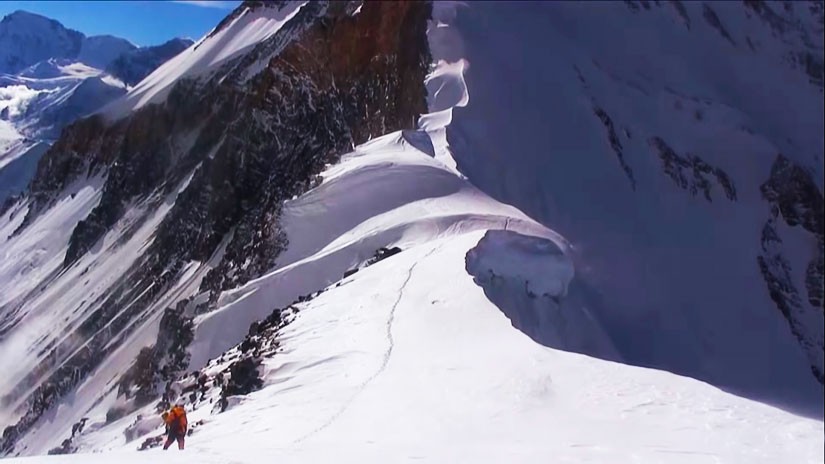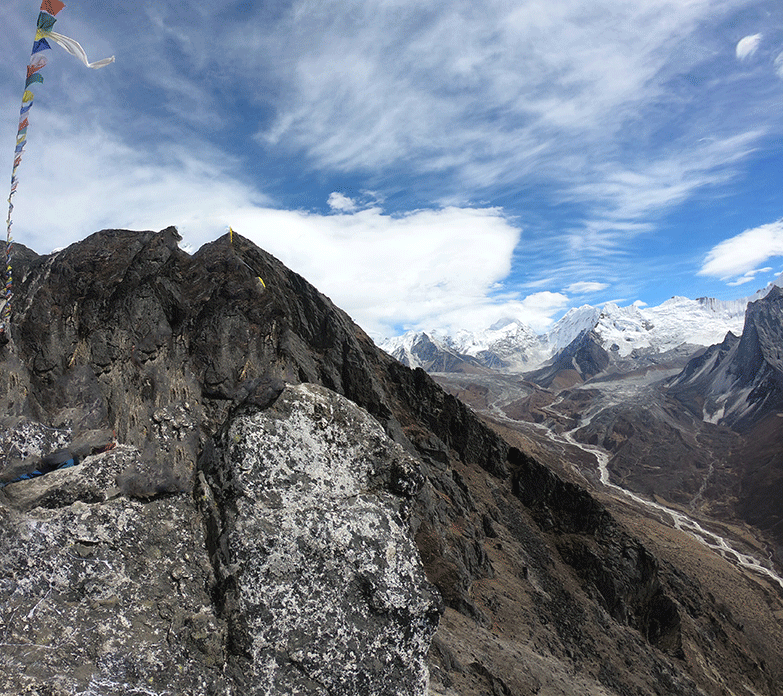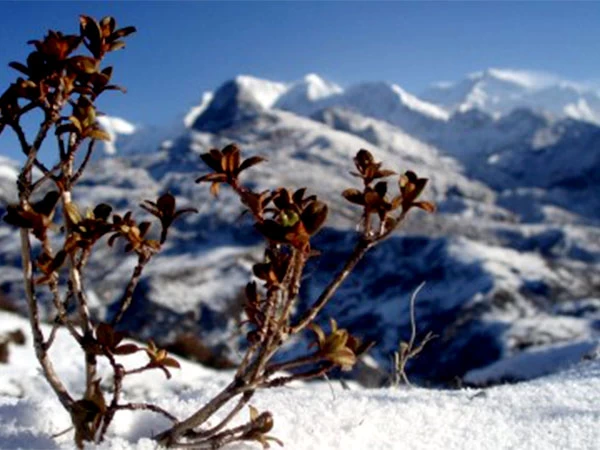Before you go for critical journeys like Everest Expedition, it’s crucial that you know the answer to the questions like, how long does it take to climb Mount Everest. Finding out the right answer to the questions like, how long does it take to climb Mount Everest, will ensure that you have realistic expectations about the journey, and that you are better prepared for the expedition. It is crucial that you do proper research, and find out all that you can about Everest Expedition before you go for the climb. A lot of times, climbers tend to make mistakes on the mountain, just because they don’t know the basic details, or are short of significant information. As a result, they land up facing bad consequences. Now, you don’t want to be that guy. Remember, a tiny mistake on the expedition could cost you your life. So be safe, and go for an ideal climb.
How Long Does It Take To Climb Mount Everest | High Camp Adventure
Everest Expedition
Anyone who knows about Mount Everest, or is even slightly engaged in mountaineering related profession, dreams of reaching the top of the peak. They definitely wonder how sweet it would be to enjoy the views from the top of Mount Everest. For some people, Everest Expedition may not mean much; for some it might just be the way to explore the views from the top of Mount Everest; but for the rest, it is a sense of achievement. For them, being able to tame Everest is a matter of great pride and honor. There are so many mountains in Nepal, and all over the world, but Everest holds a special place, not just because it is the tallest peak of them all, but also because it has a history quite unlike others. On top of everything, the fact that everyone is so crazy about climbing the peak, and reaching the top, makes you want to go for it even more.

It’s not much of a challenge to track Mount Everest Location. The mountain happens to fall on the border of Nepal and China, with its northern face on the Chinese land, and its southern face on the Nepalese land. On the Nepalese side, Mount Everest location happens to be in the Khumbu region, or the Sagarmatha National Park. Numerous activities that involve Mount Everest, like trekking, expedition, helicopter tour, mountain flight, skydiving, and so on happens in the same region. Quite like the peak, the region that contains the mountain, mainly Sagarmatha National Park is a fascinating place. It’s probably one of the richest national parks in Nepal when it comes to the population of rare animals, birds, reptiles, and other creatures. When you trek through the park, you’re bound to come across one or the other species.
The best thing about the park and mainly the Khumbu region are the different villages that are parts of it. These villages are populated with people belonging to numerous indigenous tribes. They have their own cultures and traditions, their own beliefs and lifestyles, and it’s an absolute pleasure to get to know about them. During your Everest Expedition, you will make your way through these villages. You’d definitely get to interact with these people, and spoiler alert, you’re going to fall in love with them. The people here are known for their excellent hospitality. If you happen to be in any sort of trouble, they’ll help you for sure. These settlement areas are promising not just culturally, but naturally as well, as they are parts of beautiful settings. As a matter of fact, your time spent in these places is going to be your best time of the entire trip.
How Long Does It Take To Climb Mount Everest
To answer the question, how long does it take to climb Mount Everest, well, it’s a 65 days long journey. During this time, the mountaineers don’t just climb to the top and descend to the base camp; a significant amount of time is also spent on trekking from Lukla to Everest Base Camp before the ascent, and the same way back after the descent. It is hard to tell exactly how long does it take to climb down Mount Everest, or, how long does it take to climb Mount Everest to the top. However, the core climbing duration from the Everest Base Camp to the top, and the same way back, is 47 days long. Now, though this is a specific answer to the question, how long does it take to climb Mount Everest, the number can fluctuate depending on a lot of conditions.
The climbing duration can vary depending on factors, such as the weather. A lot of times, high velocity winds blow on top of the peak, which makes it quite tough for the mountaineers to reach the top. In the same way, at times, out of nowhere, blizzards could occur. This could cause blurry vision, ultimately forcing the climber to halt the ascent. Phenomenon as such could extend the climbing duration. Other factors that can impact the answer to the question, how long does it take to climb Mount Everest, are conditions like landslides and formation of crevasses. These force the climbers to halt their climb, and find new ways to move forward. However, if all is good, and the climbing happens in an uninterrupted way, the duration could shorten as well.
Everest Base Camp
Everest Base Camp trek is a crucial part of Everest Expedition. As a matter of fact, it makes one-third of the entire journey. Everest Base Camp trek is important for the mountaineers, as it allows them to explore the entire region, and as well as acclimatize for the final climb.Going for either the Everest Expedition or Everest Base Camp trek, or both, can be the best way to experience Everest. Altogether, Everest Base Camp trek is a 10 days long journey, and this is the core duration, so the mountaineers walk the entire time. During this trip, they come across so many different villages, viewpoints and attractions that they add a whole new dimension to the Everest Expedition journey. The main attraction of the journey is, without a doubt, the Everest Base Camp, For some people, this is as close as they would ever get to Mount Everest,
Everest Base Camp trek allows you to experience Everest in a unique way. It lets you explore the outsides of Everest, instead of the main peak. Few of the most significant places that you’ll cover during the journey are Lukla, Namche Bazaar, Tengboche, Kala Patthar, and of course, the Everest Base Camp. Lukla is a beautiful village, and the home to Tenzing Hillary Airport, and Namche Bazaar is the busiest town in the entire Khumbu region. Tengboche is the home to Dawa Chholing Gompa, and Kala Patthar is known to offer the best views of the peaks in the Everest region, even better than that by the Everest Base Camp. That is the unbelievable truth.
Everest Expedition is an amalgamation of activities like mountain climbing, trekking, pleasure hiking, and sightseeing. Now, you may not be able to do much to lower the toughness level of the core climbing, except finding out as much information about the journey that would eventually make things easier for you. For instance, the answer to the question, how long does it take to climb Mount Everest. But, you can include different activities in your overall trip, like food tours, cultural tours, luxury tours, and so on, to make it more fun and relaxing. Going for the Everest Expedition will ensure that you have an experience of a lifetime. It’s entirely up to you, how big or small you want to make it. If you’re a mountaineering enthusiast, and have never tried climbing Everest, well, make sure to go for it, the next time you’re free.
High Camp Adventure is a reliable, experienced and affordable travel and tour operator, which offers the most exciting holiday packages. They specialize in trekking and expedition, however, if you’re not quite into challenges as such, you can go for one of their luxury tours. Their itineraries feature the most amazing tourist destinations in Nepal, and in other countries like Bhutan and Tibet. One of the best features about their services is that they focus on client satisfaction. To cater to the interests of their customers, the company even allows them to suggest changes to the itinerary. Their intention is to make the journey as personal as possible. They give you all the information that you need about the journey, quite like the answer to the question, how long does it take to climb Mount Everest. If you’re looking to go to any of the places mentioned above for your upcoming holidays, or you’re not quite sure where to go, and are desperately looking for some advice, make sure to contact High Camp Adventure. They are going to ensure that your trip becomes one of the most memorable ones you’ve had so far.






